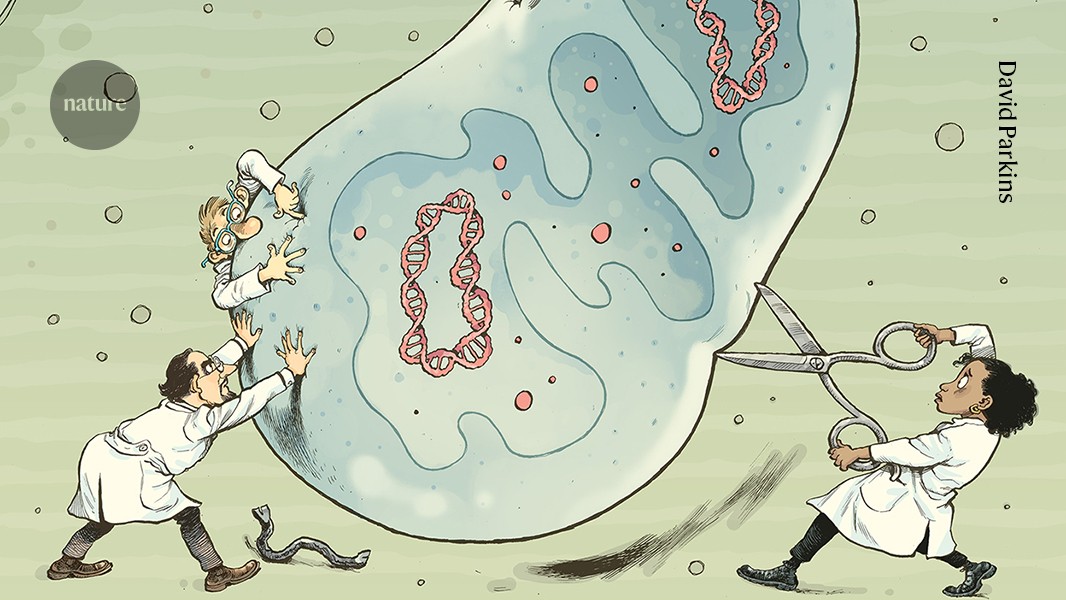Chandelier
Senior Member (Voting Rights)

Faulty mitochondria cause deadly diseases: fixing them is about to get a lot easier
CRISPR-based tools can’t easily access the DNA in these organelles, but researchers are finding other ways in.
AI summary:
Unlocking Mitochondrial DNA: New Tools for Editing a Hidden Genome
Mitochondria and the Limits of CRISPR
CRISPR gene editing has revolutionized biology, enabling breakthroughs in treating blood disorders and studying complex cell systems. However, it falls short when it comes to mitochondria—the cell's energy-producing organelles—because the CRISPR system cannot access the circular DNA (mtDNA) found inside them. This inaccessibility has been a major obstacle, especially since mutations in mtDNA are responsible for over 300 incurable disorders affecting around 1 in 5,000 people worldwide.
Why Mitochondrial DNA Is So Hard to Edit
Mitochondria are thought to have evolved from bacteria and still retain some features of their ancestors, such as circular DNA and a separate genome from the cell’s nucleus. Unlike nuclear DNA, mtDNA is inherited only from the mother and exists in multiple copies per mitochondrion. It also lacks the protective histones and efficient repair systems that nuclear DNA has, making it more vulnerable to mutations—at a rate 10–20 times higher.
Additionally, mitochondrial DNA is surrounded by membranes that prevent RNA from entering. Since CRISPR tools rely on RNA to guide enzymes to the right DNA sequences, this barrier makes CRISPR ineffective for mtDNA editing.
Alternative Tools: Cutting Out the Faulty DNA
Before CRISPR’s rise, researchers had begun exploring other tools—like zinc finger nucleases (ZFNs) and TALENs—that could target and cut mutated mtDNA. This process works by removing faulty copies of mtDNA, allowing the remaining healthy ones to replicate. In cells where both healthy and mutated mtDNA coexist (a condition called heteroplasmy), reducing the mutated proportion can alleviate disease symptoms.
However, this method is only helpful when some healthy mtDNA is present. For diseases where all mtDNA is mutated—such as Leber’s hereditary optic neuropathy—cutting alone won’t help. What’s needed are tools that can precisely change the DNA sequence, without relying on RNA guides.
A Breakthrough: CRISPR-Free Base Editing
In 2012, CRISPR–Cas9 became the standard tool for genome editing. In 2016, researchers refined it further with “base editing,” a technique that changes individual DNA letters (e.g., C to T or A to G) without cutting the DNA strand. This works well in the nucleus, but not in mitochondria because RNA-based tools can’t enter them.
A turning point came in 2018, when researchers discovered a bacterial toxin enzyme called DddA, which naturally changes Cs to Ts in DNA. Although too destructive to use directly, scientists figured out how to split and control the enzyme. By using custom proteins (derived from TALENs) to guide these enzyme pieces to mtDNA targets, they created a precise, RNA-free base editor for mitochondria.
The Future of Mitochondrial Gene Editing
These developments open the door to not only studying mitochondrial diseases in animal models but potentially treating them in humans. While still in the experimental phase, these tools represent a major leap toward therapies for previously untreatable conditions. If made safe and effective, they could one day cure mitochondrial diseases—an achievement researchers say would be a true medical breakthrough.
